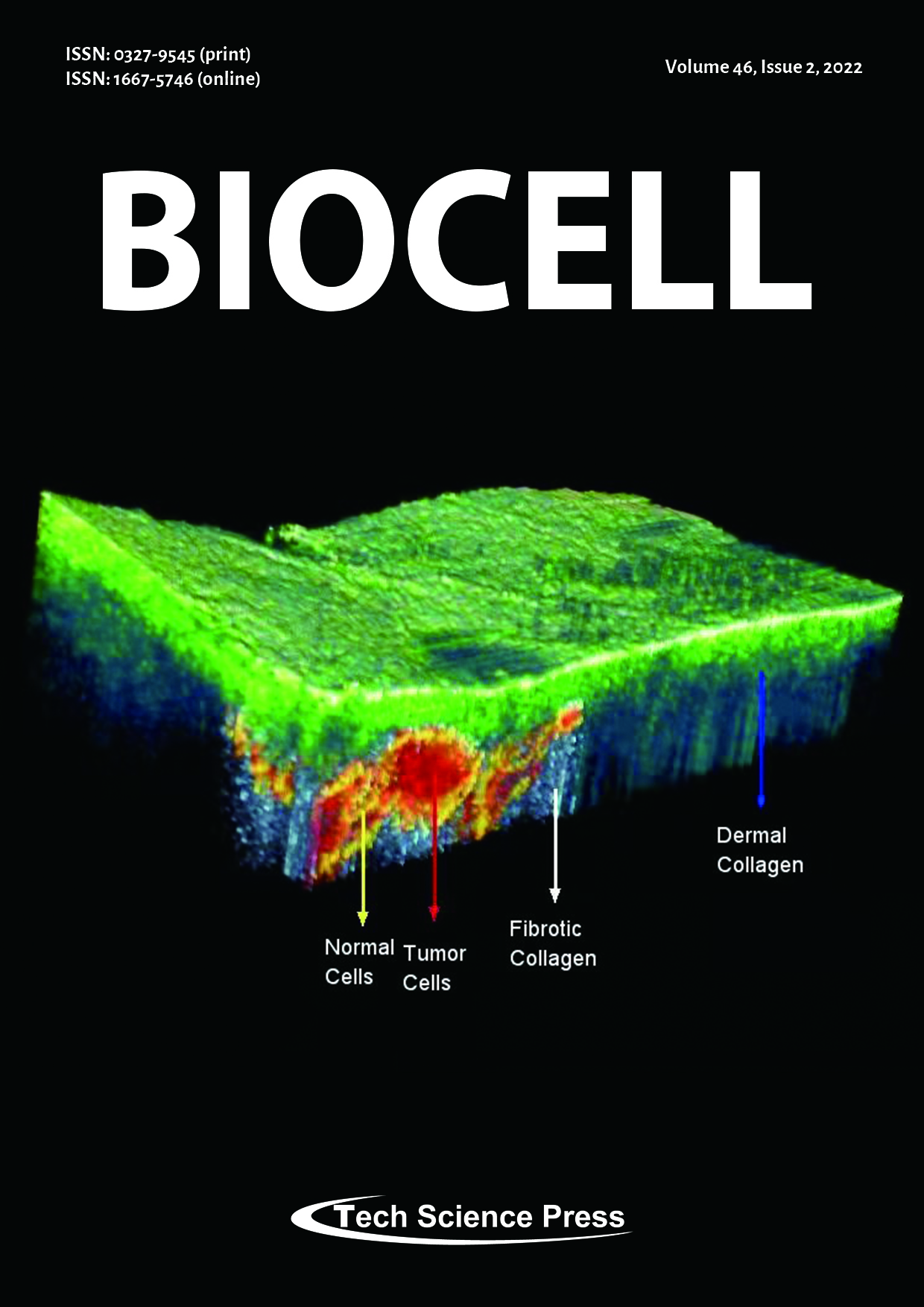
3D optical coherence tomography image of a basal cell carcinoma from human skin showing normal cells around the tumor in yellow (with a stiffness of about 1.0 MPa), tumor cells in red (with a stiffness of about 1.7 MPa), normal collagen in the dermis in blue (with a stiffness of about 2.3 MPa), and fibrotic collagen around the tumor in white (with a stiffness of about 10 MPa). The modulus data was collected using vibrational optical coherence tomography. The increased modulus of tumor cells and fibrous tissues deposited near the tumor underscore the relationship between cellular mutations and increases in modulus.
View this paper